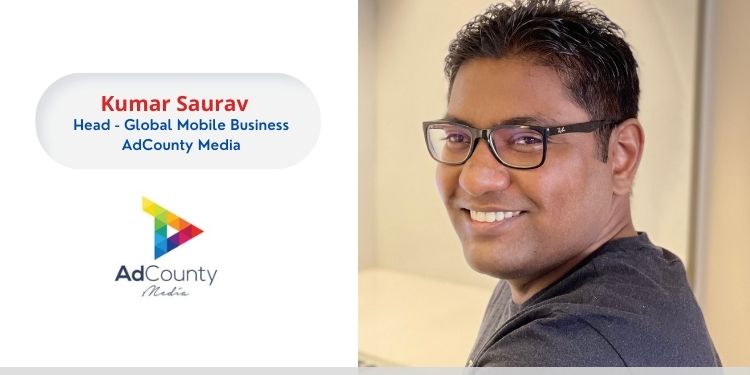The 15th edition of the IPL has kicked off, and it has become indispensable for brands to capitalize on the tournament. Concurrently, it is vital to remain watchful and stave off inordinate investments and costs incurred utilizing sponsorships, TV airtime and live ads amid the match. Targeting a mobile-based audience could be immensely fruitful for brands with budget constraints.
The resilience of most Indian brands will be determined in the year 2022. With macro-economic trends, viz. supply chain limitations, skyrocketing input costs, and inflationary concerns, brands are compelled to pass on the cost to consumers while staying abreast of the new normal’s dynamic consumer behavior and expectations. This necessitates sharing voice steer awareness and brand expansion for both legacy and digital-first brands.
Why Should Smartphone OEMs BE On Every Mobile Marketer’s Radar?
The grand sporting extravaganza, IPL 2022, continues to witness new-age brands at the forefront of the marketing warfare, figuring out novel ways to capture the attention of their target audience. Striking is the fact that Google’s 2020 Year in Search Report revealed that the most searched global term was “coronavirus,” but in India, it was “Indian Premier League.” Given that 61% of the IPL viewers are hooked on to their phones for watching matches, and 70% of them constantly rely on their phones for match updates, social media interactions, commentary, etc., smartphone OEMs should be considered as a preeminent part of the mobile marketing strategy for app marketers.
Emotions are riding high in parallel with India’s largest cricketing event. Our Global Mobile Business Head at AdCounty Media, Mr. Kumar Saurav, emphasizes how brands, marketers, and advertisers can make the most of this opportunity. With over 14 years of expertise in crafting mobile marketing strategies to boost organizational efficiency and maximize profitability, Mr. Kumar firmly advocates a comprehensive OEM ecosystem combined with innovative digital advertising mediums to gain more prominent visibility and drive more substantial connections with the audiences.
As of March 2022, Xiaomi dominates the smartphone arena with a share of 26.42%, followed by Samsung occupying 17.49% (courtesy- of Statcounter). Meanwhile, Vivo (the former title sponsor of IPL). Oppo, Realme, OnePlus, and Huawei have also ruled the Indian smartphone market. The latest IPL App Marketing Report by AppsFlyer lists entertainment, education, finance, food & beverages, and gaming apps as the focal point industries for mobile marketers. Placing bids on ad slots within live streaming might initially sound proactive but is certainly not the best bet for mobile app advertisers in the preliminary user acquisition stage. Mobile OEMs, on the contrary, could prove to be the perfect choice to realize the marketer’s campaign goals.
App advertisers can harness alternate channel mix to augment their brand campaigns with mobile OEMs such as Vivo, which had clinched the title sponsorship for IPL from 2016 to 2019 and then again in 2021. App advertisers, particularly those in the sports and gaming sector, can leverage the untapped inventory of smartphone OEMs which is brand-safe and devoid of fraud.
Marketers can strategically place multiple ad formats (video ads, rewarded, native and banner ads) at key touchpoints on mobile OEMs to reach a broader potential customer segment at distinct stages of their purchase journey. Full-screen interstitial video ads can be leveraged to intrigue users and create instant brand awareness. Appographic marketing can help brands accelerate app install rates by promoting the app to users with similar interests. PMPs (Private Marketplace) deals with OEMs can be fruitful for marketers where they can place their bid on selected inventories for a specific duration, such as the peak season of IPL, to optimize their user acquisition campaigns.
Saying “Yes” To QR Codes This IPL
Several brands across multiple channels have integrated QR codes to fill the gap between offline and online user experiences, categorically in the post-Covid era. QR codes have essentially become the force of habit for most people while making payments or downloading apps. What remains pivotal is measuring the impact from diverse mediums like website, social, email, TV, print ads, etc., inapt attribution of conversions.
Second screening on a mobile device is not unusual for many IPL viewers. Marketers can unlock this opportunity to coax viewers into scanning a QR code that appears during commercial breaks. A cryptocurrency exchange platform, Coinbase ran a commercial during the super bowl 2022 showing a bouncing QR code which redirected users to Coinbase’s promotional website offering free Bitcoins (worth $15) to new sign-ups and a $3 million giveaway. The ad surpassed 20 million hits on its landing page in a single minute.
QR codes have gained immense popularity among marketers helping them to level up campaigns by increasing website traffic; higher app installs, redirecting scanners to make purchases, enhancing social media presence, and a lot more.
Here are a few ways QR codes can be leveraged:
- Instant purchases with shoppable QR codes
- Use engaging content to pique interest
- Incentives to purchase your product
- Integrating QR codes into referral programs
In a nutshell, Smartphone OEMs and QR codes are productive alternatives to live streaming ads during the IPL, which might be as expensive as one crore to land a 30-second ad slot. OEMs and QR codes cater to diverse audiences, which boosts gaining more visibility and users.
Article is authored by Kumar Saurav – Head – Global Mobile Business, AdCounty Media.
















